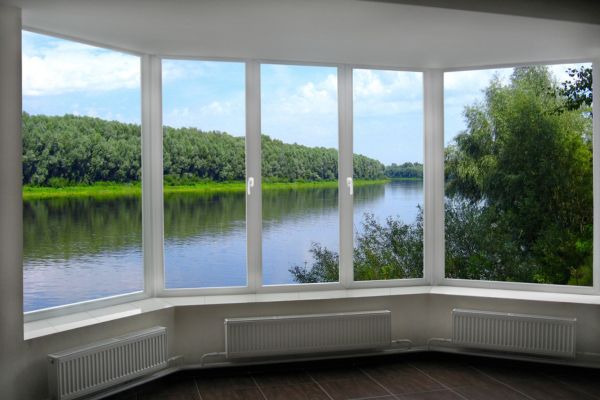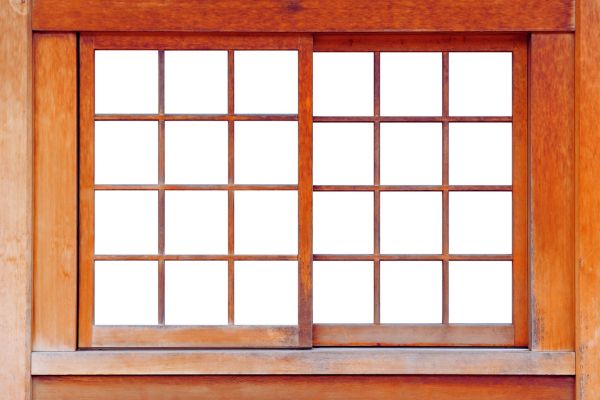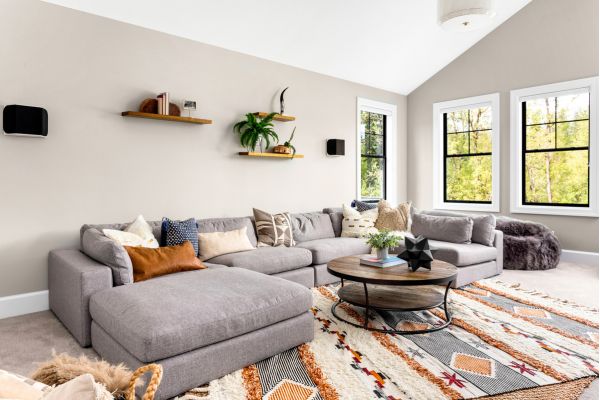There are many reasons you may want to buy new windows. The most obvious reason for this upgrade is that your old ones are no longer operating as efficiently as they should. They may be letting in drafts or increasing your energy bills. In some cases, you may have broken windows or frames. But sometimes you just need a change – and that’s okay, too.
The reason for getting new windows is less important than ensuring you receive the best upgrade for your home. Below, we discuss six crucial considerations to make to ensure this.
But before we do, if you’re located near the Lake in the Hills, IL, region, click the button below to check out the windows offered by Your Windows Solutions. All our replacement windows are custom-made to fit your needs perfectly and are guaranteed to exceed Energy Star ratings.
1. Window Type
The first consideration you’ll want to make is whether your new windows will be the same as your previous ones or different. Many people choose to replace their existing windows with new versions of the same type. For example, replacing old double-hung windows with new double-hung windows. With this option, you’ll still reap the aesthetic and energy-saving benefits of new windows.
Reasons for Choosing a Different Window Type
However, some people may want to replace their existing windows with a new type. There are three primary reasons for this:
- For aesthetic purposes: You may prefer the look of a different window type more than your current one.
- For airflow: You may want to replace stationary window options with ones that will open to allow fresh air into the home.
- For natural lighting: You may desire a window that lets in more natural light than your current option.
Of course, these are only the primary reasons to switch window types, and your reasoning may not fit into one of these categories. Regardless, you may find it helpful to understand your options.
Types of New Windows
The most common types of new windows you may choose from to replace your existing ones include:
- Awning Windows: Often smaller than standard windows (but not always) and hinged at the top to open outwards.
- Basement Windows: Allow airflow and light into your basement while improving safety and energy efficiency.
- Bay Windows: Ornamental type that extends past your home’s exterior to add more interior space.
- Bow Windows: Three or more windows that angle beyond the home’s exterior, often arranged with a single stationary window between two opening ones.
- Casement Windows: Allow maximum ventilation using a side hinge rather than a top or bottom hinge.
- Double Hung Windows: A classic up-and-down sliding style that most people think of when they hear “windows.”
- Picture Windows: Large, stationary windows that allow for maximum natural light and unobstructed views.
- Shape Windows: Unique aesthetic options in non-traditional shapes like circles, stars, pentagons and ovals.
- Sliding Windows: Beautiful and designed for functionality to maximize both airflow and ventilation in a given room.

This bow window arrangement features two fixed and one moving window for fantastic views
2. Number of Panes
Your second consideration will be how many panes you want for your new windows. A “pane” is a sheet of glass housed inside the window frame. Generally, you can choose between one and three panes for modern windows.
We (and most other experts) recommend two panes for your windows, but the choice is up to you. Why do we recommend two panes? It’s just the right amount of insulation against the elements. One pane isn’t usually enough and will let heat or cold into your home while also allowing your heating and cooling out. We feel that the three panes are overkill, and the extra layer doesn’t offer enough additional protection to be financially viable.
Are there exceptions to this rule? Absolutely! But if you live in Illinois, you likely don’t qualify for the exceptions.
For example, triple panes may be financially viable in ultra-frigid climates (like Alaska), where you need every extra layer of protection against the cold you can get. Or in sweltering climates, like deserts, where the heat reaches 100+ Fahrenheit regularly during the summer. In Illinois, the standard temperatures don’t reach either of these extremes, so you’ll receive adequate protection with only two panes.
3. New Windows Frame Material
You can choose from several materials for your frames. We suggest vinyl window frames because they combine durability and affordability. Vinyl is also a low-maintenance, energy-efficient option. However, you could choose other window frame materials if you desired.
For example, wood has a timeless appearance that may match well with historic homes. However, they’re high-maintenance, costly and prone to pest infestations (like termites). Wood can also rot and is more prone to mildew or mold than alternative options.
Steel provides a modern aesthetic that many homeowners love, and it’s incredibly durable. Unfortunately, it also has a high price point and is prone to rusting.

Wood windows are beautiful but challenging to maintain and prone to bug infestations!
4. New Windows Size
Getting the correct window size is crucial. Thankfully, if you’re working with a reputable local company like Your Window Solutions, they’ll handle measurements, so you don’t have to. But if you want to know your window size or are considering the DIY route, you’ll need to learn how to measure.
To get the right new windows, you must first verify that the old ones are square, plumb and level. Then, you’ll need to measure the width and height.
Ensuring Old Windows Are Square, Plumb and Level
To determine if your windows are properly squared:
- Position a tape measure at the top right corner, where the horizontal and vertical window jambs intersect.
- Extend the tape measure diagonally downward to the bottom left corner, where the trim meets, and note the measurement.
- Then, measure diagonally from the top left corner to the bottom right corner and record this measurement.
- Compare the two measurements. The opening should be suitable for most standard windows if the measurements are within 1/4 inch of each other.
To verify if the window is plumb:
- Place a level against the face of the side jamb.
- Ensure the bubble is centered between the two indicator lines on the level.
- If it is, the window is plumb.
To check if the window is level:
- Place the level on the sill.
- Make sure the bubble is centered between the two indicator lines on the level.
- If it is, the window is level.
Measuring Width and Height for New Windows
Now, you can move forward with measuring the height and width for your new windows.
Width measurements should be taken from the left jamb to the right jamb at three points: the top, bottom and center. Don’t include any trim in this measurement, or you’ll end up with windows that are too large. The lowest number of these three is your width.
Height measurements should be taken from the top of the sill to the top of the window opening. Again, remember not to include any trim in this measurement. Measure three times, in the middle, left and right. The lowest number of these three is your height.
5. Project Budget
This consideration is simple but invaluable: you should know your new windows budget before shopping. That way, you understand what you can afford. Plus, staying within that budget can make you happier with your purchase because you won’t feel like you overspent.
6. Finding the Right Company
The window replacement company you work with will significantly impact your experience. You want to find a company that provides high-quality work, unrivaled customer service and a reasonable price point. But how do you find one?
To find the best window replacement company:
- Look for companies in your area
- Read online reviews
- Ask for recommendations from friends, family, neighbors and coworkers
- Find companies with a positive reputation
- Ensure companies can install or replace the window type you want
- Schedule a consultation
New Windows FAQs
You may still have questions before purchasing your new windows. Below, we’ve answered some of the most common questions we’ve received from our customers. We hope you find them helpful!
Which new windows are best for improving airflow and ventilation?
Casement windows are generally the best option for improving airflow and ventilation.
Which new windows are best for increasing natural lighting?
Picture windows are the best option for increasing natural lighting, but many types will work.

This window arrangement significantly increases natural lighting in the home!
How do I know which window style is best for my home?
The best window style for your home depends on your functional needs, design preferences, and architectural style. Double-hung windows are popular for traditional homes, while casement windows offer a modern look and excellent ventilation. Consulting with a professional can help you make the right choice.
What should I expect during the window installation process?
During installation, the old windows are removed, and new ones are fitted into the existing openings. The process usually involves measuring, preparing the window openings, installing the new windows, and sealing gaps. Depending on the complexity and number of windows, most installations take a day or two.
How long do new windows typically last?
The lifespan of new windows varies depending on the material. Vinyl windows typically last 20-40 years, wood windows about 15-30 years with proper maintenance, aluminum windows around 20-30 years, and fiberglass windows can last 30-50 years. Regular maintenance can extend their lifespan.
Purchase High-Quality Lake in the Hills New Windows Today
Your Window Solutions proudly provides custom-built windows and expert installation in Lake in the Hills and the surrounding region. We pair this craftsmanship with unrivaled customer service. If you’re looking for new windows, call us at (833) 367-9687 or fill out the form below to get started. We look forward to serving you!





